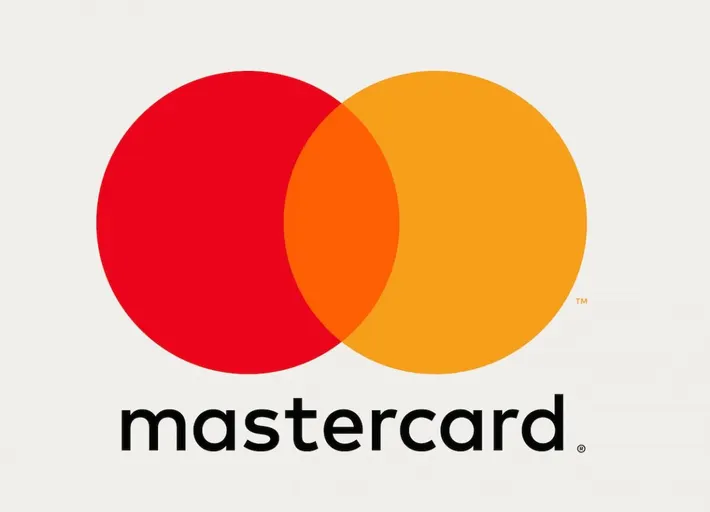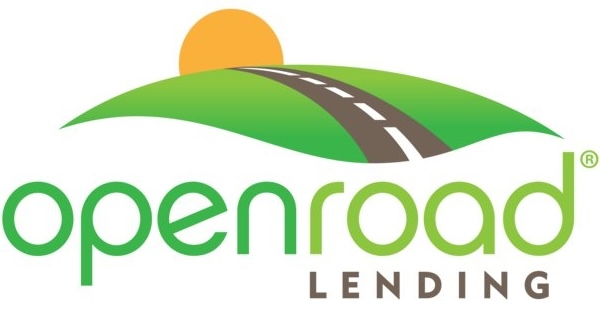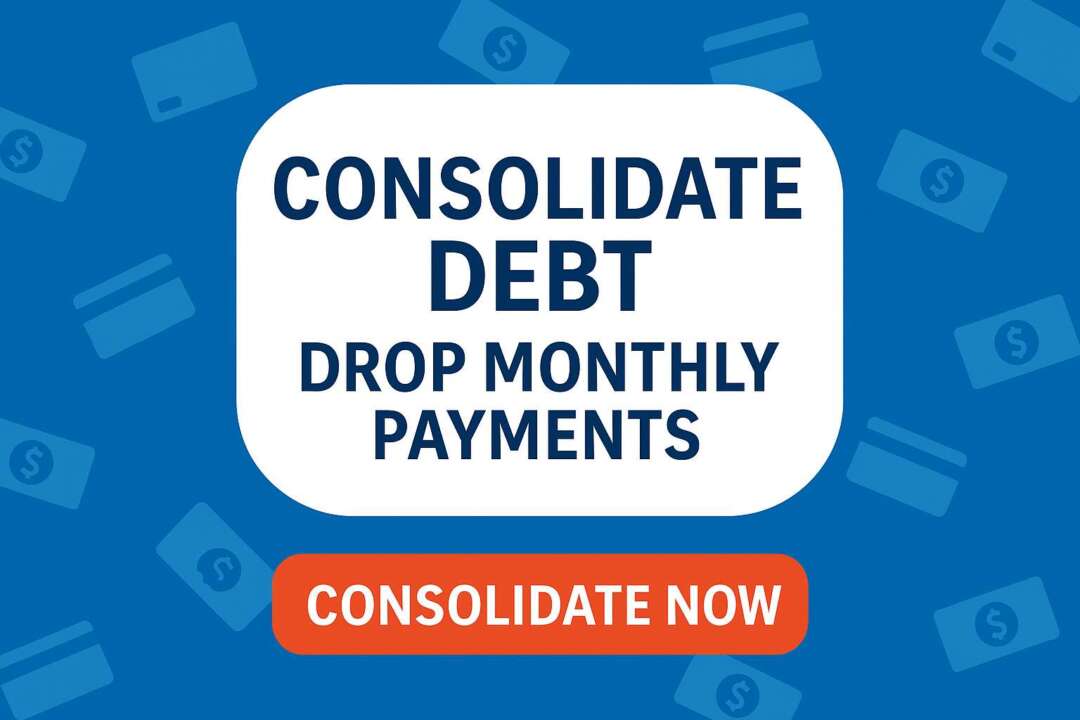
Should I get a personal loan
When you are faced with a financial emergency, personal loans might be the most versatile way to help you out. People take out personal loans for a long list of reasons, but the most common reasons include covering a short-fall in your income, paying for a medical emergency, making home or auto repairs, or helping you bridge the gap between paychecks. Of course, people also take out loans for things like family vacations, home renovations, and general consumption.
How common are personal loans? How many people have taken out a personal loan?
Personal loans have become an increasingly common financial tool in today’s world. These loans, typically unsecured and versatile in purpose, are sought after by individuals from all walks of life. Whether it’s for debt consolidation, home improvements, education, or unexpected expenses, personal loans offer a lifeline to help people achieve their financial goals and navigate life’s financial challenges.
According to TransUnion, personal loans are more popular than ever before.

(Source: TransUnion)
From 2022 to 2023, personal loan balances increased 26%. This increase was due to both the increase in the number of people who had a personal loan as well the increased amount of debt the average borrower held.
| Personal loan metric | Q1 2023 | Q1 2022 | Q1 2021 | Q1 2020 |
| Total balances | $225 billion | $178 billion | $144 billion | $159 billion |
| Number of unsecured personal loans | 26.9 million | 23.9 million | 20.8 million | 23.5 million |
| Number of consumers with unsecured personal loans | 22.4 million | 20.4 million | 19.0 million | 20.9 million |
| Average debt per borrower | $11,281 | $9,896 | $8,817 | $8,820 |
(Source: TransUnion)
5 Facts about Personal Loans
If you’re asking yourself, “Should I get a personal loan” then there are a few facts you may want to know. While borrowing money isn’t anything new, personal loans are a bit different from other loans like those for houses or cars. Here are five facts about personal loans you ought to know:
Personal loans do not require collateral
Collateral in lending is an asset, such as a car or home, that a borrower pledges to secure a loan. If the borrower can’t repay, the lender can take the collateral to recover their losses. It provides security for the lender and may lead to lower interest rates for the borrower.
Unlike many other types of loans, personal loans are typically unsecured, meaning you don’t need to provide collateral. Lenders rely on your creditworthiness and income to approve your personal loan application.
Because personal loans don’t require collateral, they can often have a higher interest rate. This is because the lender needs to charge enough to cover customers who cannot repair their loans.
The reasons people take out a personal loan
Personal loans are versatile and can be used for a wide range of purposes, including debt consolidation, home improvement, medical expenses, travel, or even starting a small business.
There are usually no restrictions on how you can use the funds. Lenders typically don’t care what you use the funds for. They might ask, but that is usually for marketing purposes: they like to know how people are using the money so they know how to find more customers.
Some of the more common reasons why people take out a personal loan include:
- Debt Consolidation: Combining multiple debts into one manageable payment. (More about debt consolidation loans read this article or watch this video.)
- Supplement income: Covering a shortfall in income due to illness, job loss, or reduced hours
- Home Improvement: Renovating or repairing their homes.
- Medical Expenses: Covering unexpected healthcare costs.
- Education: Paying for tuition, books, or educational expenses.
- Wedding: Funding a dream wedding or honeymoon.
- Vacation: Travel expenses for a special trip.
- Moving: Relocating to a new place.
- Emergency Expenses: Handling unexpected financial crises.
- Business Start-up: Financing a new business venture.
- Vehicle Purchase: Buying a car, motorcycle, or RV.
- Legal Fees: Covering legal expenses, like divorce or lawsuits.
- Special Events: Celebrating milestones, such as birthdays or anniversaries.
- Taxes: Paying off tax debts or covering IRS obligations.
- Pet Care: Covering veterinary bills for beloved pets.
- Consumer Goods: Purchasing electronics, appliances, or furniture.
Being cautious about the reasons for taking on debt can prevent debt from having a lasting impact on your financial well-being. While it can help you achieve important goals like buying a home or getting an education, you should avoid unnecessary or impulsive debt for things that may not provide lasting value.
Debt comes with interest payments, and if not managed wisely, it can lead to financial stress, hamper your ability to save, and limit your future choices. So, it’s important to evaluate the necessity and long-term benefits before taking on any debt.
Personal loans have fixed interest rates
A fixed interest rate for personal loans means that the rate remains constant throughout the loan term. Borrowers pay the same interest percentage from start to finish, providing predictability in monthly payments and making it easier to budget and plan for repayment.
Most personal loans come with fixed interest rates. This can be advantageous because it provides predictability in your monthly payments, making it easier to budget.
Loan companies calculate the interest owed every payment based on the amount of principal you still have outstanding. Early payments on a personal loan often consist of more interest and less principal because loans are structured to front-load the interest. In the initial stages, the outstanding loan balance is higher, so the interest, calculated as a percentage of the balance, is more significant. Over time, as you make payments and reduce the balance, the interest portion decreases, and a larger portion goes toward the principal. This is why early payments appear to make less progress in reducing the principal balance.
You can, of course, make this math work in your favor, as well. If you can make extra principal payments early in the loan, you will save more money on interest than you would if you made that extra payment at the end of the loan.
Personal loans have a fixed principal
Revolving credit is a type of borrowing that gives you a maximum spending limit, like a credit card. You can use it to make purchases or withdraw cash up to that limit. Unlike a personal loan with fixed payments, revolving credit allows you to decide how much to repay each month, and you can keep using it as long as you make payments on time. The interest you owe can vary based on your outstanding balance.
A personal loan provides you with a lump sum of money upfront, which you repay in fixed installments over a set period, usually with a fixed interest rate.
The fixed principal of a personal loan can make it easier to plan out your month-to-month budget. You know exactly what your monthly payment will be and you know exactly how long you will be in debt.
The predictability of a personal loan can also help you get out of debt faster. Because you know what your monthly payment will be, you can more easily plan to make extra payments which will accelerate your debt payoff.
Revolving credit, like a credit card, can also make it difficult to get out of debt because you can always add to your debt. For this reason, many people struggle to fully pay off credit card debt because you can always borrow more, at any time, for any reason.
That is much harder to do with a personal loan. While some lenders will allow you to refinance your loan and increase the overall loan amount, you must make a decision to open that option.
The ways that personal loans can affect your credit score
Personal loans can affect your credit score in several ways.
Applying for a personal loan can affect your credit score
Applying for a personal loan can impact your credit because lenders typically perform a credit check, which is known as a “hard inquiry.” This inquiry temporarily lowers your credit score by a few points.
It’s important to be mindful of how often you apply for credit, as multiple hard inquiries in a short period can have a more significant negative impact on your credit profile.
Most lenders will only conduct a hard inquiry when you decide to take the loan that they offer. If you are just shopping around for a loan, lenders will usually just do a soft inquiry to your credit report. You will be able to see a soft inquiry on your credit report, but it plays no role in any of your credit scores.
Making on-time payments on your personal loans can affect your credit score
If you’re approved and make on-time payments, a personal loan can have a positive long-term effect by demonstrating responsible borrowing and payment behavior, potentially improving your credit score over time.
The opposite is also true. Late payments reported to a credit bureau will negatively affect your credit score. The more late you are, the more significantly the late payment will hurt your credit score.
A late payment to a personal loan company refers to not paying the loan installment by the due date, potentially resulting in late fees or penalties. A lender typically only reports a late payment to the credit bureaus when the payment is 30 days past the due date. So, if you miss your due date, you should have a little bit of time before the lender reports the late payment to the credit bureaus. You should be aware of your lender’s policies, though.
How a personal loan can change the average age of credit which can affect your credit score
When you take out a personal loan, it can impact the average age of your credit accounts, which plays a role in determining your credit score.
If the personal loan is a new credit account, it may reduce the average age because it’s considered a recent addition. This can potentially lower your credit score, as having a longer credit history is generally seen as more favorable.
However, as you make timely payments on the loan over time, it can positively influence your credit score, counteracting the initial drop caused by the new account. So, while a personal loan can initially affect the average age of credit, responsible management could ultimately improve your credit score in the long run.
Should I get a Personal Loan: Deciding When to Take Out a Personal Loan
Financial decisions have a profound impact on our lives, and taking out a personal loan is no exception. Whether it’s to fund a dream vacation, consolidate debts, or cover unexpected medical expenses, the choice to borrow money should never be taken lightly. Instead, it should be based on a careful evaluation of your circumstances and a consideration of available alternatives.
The following three-step approach can help you decide whether taking out a personal loan is a good decision.
Step 1: Assess the Importance of your current Need
The first step in determining whether a personal loan is the right choice is to assess the importance of the financial goal or need you’re trying to fulfill. Ask yourself how vital it is to your overall well-being and financial stability. Here are some key considerations:
A. Urgency and Necessity
Is the expense or goal urgent and necessary, or can it wait? If it’s a critical need like a medical emergency or essential home repair, taking out a personal loan may be more justifiable. However, if it’s a non-urgent expense, like a vacation or luxury purchase, you may want to consider delaying it and saving up instead.
B. Impact on Your Life
Consider how fulfilling this need or goal will impact your life. Will it significantly improve your quality of life, reduce financial stress, or enhance your future prospects? If the benefits outweigh the costs and risks associated with a personal loan, it may be worth pursuing.
Step 2: Explore Alternatives to taking out a personal loan
Before committing to a personal loan, it’s essential to explore all available alternatives. Borrowing money should not be your default choice. First, you need to determine other approaches to solving your financial issue. Then, you need to think about the different options from several different perspectives.
Look for creative solutions. If you can find a way to solve your financial issue without going into debt, it would be worth your time looking into those options. They might include starting a payment plan, borrowing from family or friends, postponing a purchase, shuffling financial needs around, or looking for significantly cheaper options.
Before taking a personal loan, consider each of these alternatives:
Withdrawal from savings
Some people like to take out a personal loan instead of depleting their savings. While it is admirable to preserve your savings, it might be more beneficial to save yourself the interest expense.
Selling investments
Selling investments can be an effective way to avoid a personal loan. Few investments can earn more than 15% return, but many personal loans cost more than than in interest expense. However, you should consider the impact on your financial goals and potential taxes or penalties for early withdrawals if your investments are in retirement instruments.
Postpone the purchase
Delaying a non-urgent expense can eliminate the need for a personal loan. By saving money over time, you can fund the purchase without incurring debt. It’s good to remind yourself that there will always be another sale.
Borrow from family or friends
Borrowing from loved ones can provide interest-free or low-cost funds. However, it’s crucial to maintain clear communication and a formal agreement to avoid straining relationships. Saving money on interest can’t compensate for ruining a relationship with a loved-one.
Negotiate a payment plan
For certain expenses, negotiating a payment plan with the service provider or creditor can help you manage without taking out a loan, spreading the cost over time. Most billing departments have programs set up to allow for payment plans.
Use a credit card
Credit cards can cover smaller expenses or provide a short-term solution. Be mindful of interest rates and pay off the balance promptly to avoid high interest costs. You need to be careful that the credit card interest rate would indeed be lower than a personal loan that you could qualify for. Also, if you are using a credit card cash advance, be sure to calculate the cash withdrawal fee as well as the interest rate.
Use overdraft strategically
Overdraft protection from your bank can cover short-term gaps in funds. While convenient, overdraft fees can accumulate, so it’s best used sparingly. Use the overdraft option if you only need money for a few days before the next payday. Also, be aware of your bank’s overdraft policy. The overdraft fees can pile up very quickly if each overdraft incurs a new penalty.
Sell something on Ebay, Craigslist
Selling unused or unnecessary items can generate cash to cover expenses without incurring debt, making it an effective way to fund short-term needs. You can also benefit from have less unused stuff lying around.
Get a home equity loan/line of credit from your bank
If you’re a homeowner with substantial equity, a home equity loan or line of credit can provide lower interest rates compared to personal loans, making it a suitable option for larger expenses like home improvements or debt consolidation.
Step 3: Compare Options
Once you’ve assessed the importance of your financial goal and explored alternative solutions, the final step is to compare your options. Assessing those options will require that you look at more issues to determine whether they are superior to going into more debt.
Assessing alternatives to borrowing money is a crucial step in making sound financial decisions. It involves a comprehensive evaluation of various factors, including overall cost, emotional impact, and future consequences:
- Overall Cost: Consider the total cost of borrowing versus the alternatives. Calculate the interest payments, fees, and any other associated costs of taking out a loan. Compare this cost to what you would spend by using savings, investments, or other financial resources. Choosing the option with the lowest overall cost can save you money in the long run.
- Emotional Impact: Think about the emotional toll of taking on debt. Borrowing money can lead to stress and anxiety, especially if you’re uncertain about your ability to repay the loan. Assess how different options make you feel and prioritize financial choices that align with your emotional well-being. Also, consider the source of the debt. Will there be an additional financial burden if you borrow from a loved-one?
- Future Impact: Examine the long-term consequences of your decision. How will each choice affect your financial future? Consider the impact on your savings, retirement plans, and other financial goals. Some alternatives, like depleting savings, may feel like you are delaying your progress toward your goals, or it may help you get through the emergency more quickly because you are saving on interest expense.
- Risk Tolerance: Evaluate your tolerance for risk. Borrowing money inherently carries some level of financial risk, particularly if you face unforeseen challenges like job loss or unexpected expenses. Compare the level of risk associated with each alternative and choose one that aligns with your comfort level.
- Financial Stability: Assess your current financial stability. If your financial situation is precarious, taking on more debt may not be advisable. Consider alternatives that don’t jeopardize your stability and provide a safety net for unexpected events.
- Future Income: Examine your expected future income. If you anticipate a significant increase in income, it might be more feasible to use alternative resources to cover immediate expenses. This can reduce the long-term financial burden of debt.
- Impact on Credit: Recognize the impact on your credit score. Borrowing money can influence your credit history. Carefully manage your choices to ensure they positively contribute to your credit profile. On the other hand, if your credit score is already damaged, perhaps the smarter move would be to be late on a few other payments and avoid accumulating more debt.
- Available Resources: Take stock of your available financial resources. Do you have savings, investments, or other assets that can cover the expense? Weigh the convenience of using existing resources against the potential costs of borrowing.
In essence, assessing alternatives to borrowing money requires a comprehensive examination of both financial and emotional factors. By considering the overall cost, emotional impact, future consequences, risk tolerance, and your current financial situation, you can make informed decisions that align with your goals and values while ensuring your financial well-being.
In conclusion, deciding whether to take out a personal loan is a significant financial choice that requires careful consideration. By following this three-step approach—assessing importance, exploring alternatives, and comparing options—you can make an informed decision that aligns with your financial goals and minimizes potential problems. Remember that each individual’s financial situation is unique, so take the time to evaluate your circumstances thoroughly before committing to any borrowing arrangement.
Where to find a personal loan
If you determine that your best option is indeed to take out a personal loan, you should always shop around. (Also check out our Personal Loan Checklist.)
Lenders have different underwriting criteria. Some may look heavily at your credit score and others might barely look at your credit score at all. You might be surprised to find that one lender will approve you while two others reject your application. The only way you can know for sure whether you will be approved is to apply.
Pro Tip: Most lenders will give you a tentative approval based only on a soft credit inquiry. That means that applying will not hurt your credit score. You will be able to see soft credit inquiries on your credit report, but lenders do not see them. Lenders only see hard credit inquiries. A lender will make a hard inquiry to your credit report once you’ve decided to accept the loan. (Learn more about credit inquiries.)
You should apply to at least three different lenders before you take a loan. It sounds time consuming, but it can save you hundreds of dollars in interest expense. Find the best terms you can.
The easiest way to apply to multiple lenders at the same time is to use a matching service. You can use the one at The Yukon Project. Just enter your information once and you several lenders will determine whether they want to extend you credit. You can easily compare their offers to find the best one for you and your situation.
What lenders offer personal loans to people with good credit?
The following lenders often provide personal loans to people who have credit scores above 660:
- Achieve
- Avant
- Best Egg
- Happy Money
- Lending Club
- LendingPoint
- One Main Financial
- Prosper
- SoFi
- Upgrade
Many lenders do not lend based on credit score. The only way to be sure of whether you would be approved is to apply. Suggesting that these lenders will lend to people with credit scores above 660 is only a rough estimation. Some people with lower scores could get approved and some people with higher scores could be denied.
What lenders offer personal loans to people with poor or bad credit?
The following lenders often provide personal loans to people who have credit scores below 650:
- 24/7 Lending Group
- Advance America
- Bright Lending
- CashNetUSA
- Elastic
- NetCredit
- OppLoans
- PersonalLoans.com
- Plain Green
- Rise
- SpotLoan
- World Finance
Most lenders to loan to people with bad credit do not base their decisions on credit score. They often look at cashflow and recent behavior. The only way to be sure of whether you would be approved is to apply. Suggesting that these lenders will lend to people with credit scores below 650 is only a rough estimation. Some people with higher scores could be denied.
Conclusion
When it comes to personal loans, knowledge is power. And responsible use of credit is the key to unlocking its potential. Understanding the facts about personal loans empowers you to make informed financial decisions, whether it’s for consolidating debt, pursuing dreams, or navigating unexpected expenses. In the end, only you can answer the question of “Should I get a personal loan?”
Remember that while personal loans offer flexibility, their impact on your financial health depends on how wisely they are managed. Maintaining a good credit score, making on-time payments, and borrowing only when necessary are all essential steps in leveraging personal loans to your advantage.
By staying informed and practicing responsible financial habits, you can harness the benefits of personal loans while safeguarding your long-term financial well-being.
























